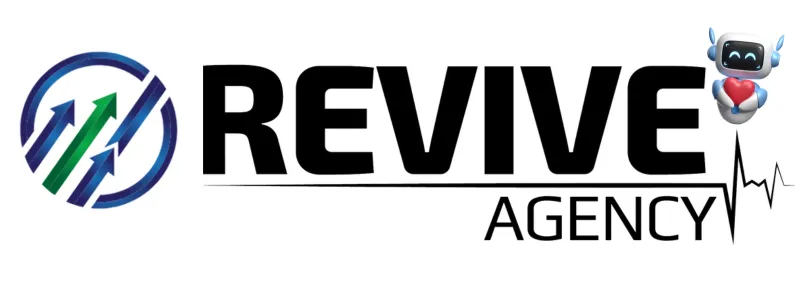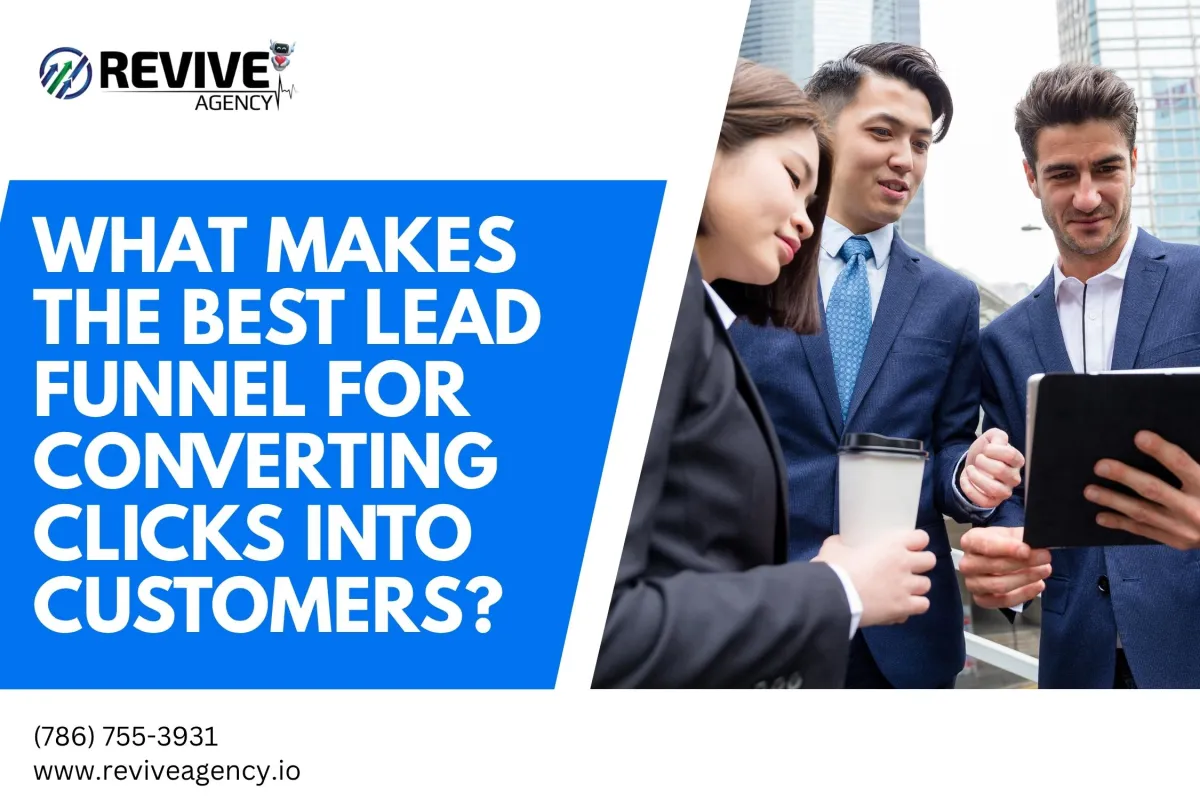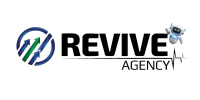
Our Partners





What we Offer
Our affiliate courses are designed by experts who have years of experience
Website Development
Our affiliate courses are designed by experts who have years of experience and proven results in the affiliate marketing industry.
Advertising Management
Our affiliate courses are designed by experts who have years of experience and proven results in the affiliate marketing industry.
Reputation Management
Our affiliate courses are designed by experts who have years of experience and proven results in the affiliate marketing industry.
Lead Funnel Builds
Our affiliate courses are designed by experts who have years of experience and proven results in the affiliate marketing industry.
Social Media Management
Our affiliate courses are designed by experts who have years of experience and proven results in the affiliate marketing industry.
Sales Training
Our affiliate courses are designed by experts who have years of experience and proven results in the affiliate marketing industry.

About us
Get More Customers
Our affiliate courses are designed by experts who have years of experience and proven results in the affiliate marketing industry.
They will teach you the best strategies, tools, and tips to find profitable niches, create engaging content, generate traffic, and convert visitors into buyers. You will also learn how to avoid common mistakes, optimize your performance, and scale your business. Whether you are a beginner or an advanced affiliate marketer, our affiliate courses will help you take your skills and income to the next level.
About us
Keep Your Schedule Full
Our affiliate courses are designed by experts who have years of experience and proven results in the affiliate marketing industry.
They will teach you the best strategies, tools, and tips to find profitable niches, create engaging content, generate traffic, and convert visitors into buyers. You will also learn how to avoid common mistakes, optimize your performance, and scale your business. Whether you are a beginner or an advanced affiliate marketer, our affiliate courses will help you take your skills and income to the next level.


About us
Improve Your Reputation
Our affiliate courses are designed by experts who have years of experience and proven results in the affiliate marketing industry.
They will teach you the best strategies, tools, and tips to find profitable niches, create engaging content, generate traffic, and convert visitors into buyers. You will also learn how to avoid common mistakes, optimize your performance, and scale your business. Whether you are a beginner or an advanced affiliate marketer, our affiliate courses will help you take your skills and income to the next level.
About us
Track Your Results
Our affiliate courses are designed by experts who have years of experience and proven results in the affiliate marketing industry.
They will teach you the best strategies, tools, and tips to find profitable niches, create engaging content, generate traffic, and convert visitors into buyers. You will also learn how to avoid common mistakes, optimize your performance, and scale your business. Whether you are a beginner or an advanced affiliate marketer, our affiliate courses will help you take your skills and income to the next level.


About us
Get Paid Faster
Our affiliate courses are designed by experts who have years of experience and proven results in the affiliate marketing industry.
They will teach you the best strategies, tools, and tips to find profitable niches, create engaging content, generate traffic, and convert visitors into buyers. You will also learn how to avoid common mistakes, optimize your performance, and scale your business. Whether you are a beginner or an advanced affiliate marketer, our affiliate courses will help you take your skills and income to the next level.

What Makes the Best Lead Funnel for Converting Clicks into Customers?
Many businesses focus on driving traffic but lack a structured way to convert interest into action. Visitors click, skim, and leave when no clear path exists. Funnels solve this by guiding users through a defined process with one outcome in mind.
A well-built funnel leads prospects step by step toward conversion. Strong messaging, clean design, and clear calls to action remove confusion. Each stage plays a specific role in building trust and prompting decisions.
Revive Agency builds strategic funnels for service businesses that need qualified leads. Integrated systems handle follow-up, track performance, and support growth. Every step works to move traffic closer to revenue.
The 4 Key Stages of a High-Converting Funnel
Every successful lead funnel follows a clear, four-stage framework. Each stage moves the user forward, reduces friction, and increases the chance of conversion with precision.
Attract
Attraction starts with visibility. The goal is to drive qualified traffic to your funnel using targeted, intent-based channels that align with what your audience needs.
To attract effectively, focus on visibility, messaging, and audience targeting. Key elements include:
Organic Search Optimization
Improve rankings with high-value content that matches search intent and answers real questions service buyers ask every day.Paid Traffic Campaigns
Drive leads using Google Ads or Meta campaigns built around local keywords and service-specific offers that match user expectations.Audience Targeting Precision
Segment traffic based on behavior, geography, or funnel stage to attract users more likely to convert from click to customer.Message Match Across Channels
Ensure your ads, metadata, and landing pages all carry a consistent value proposition aligned with the user's search or referral source.
Engage
Once a user lands, the engage stage keeps attention. This is where trust builds, interest deepens, and the path to action becomes clear and appealing.
To engage well, your funnel must guide, not confuse. Focus on these key areas:
Clear Above-the-Fold Content
Deliver your core value proposition fast using short headlines, visuals, and trust signals designed to reduce bounce and build credibility.Pain Point Alignment
Speak directly to problems your target audience faces. Use language they understand and position your solution as the next logical step.Social Proof and Trust
Include testimonials, reviews, or service awards to create instant confidence and lower skepticism during the first seconds of page engagement.Simple Navigation and Structure
Avoid clutter and decision fatigue. Use clean design and obvious next steps to keep the user moving through your funnel flow.
Convert
Conversion turns interest into action. At this stage, your funnel must remove all friction and prompt the user to take the next step now.
Effective conversion depends on clarity, speed, and ease of interaction. Focus on:
Short, Focused Forms
Limit fields to essentials only. Name, contact, and one custom field are usually enough to capture qualified, conversion-ready leads.Strong Call-to-Action (CTA)
Use specific, benefit-driven language. “Get My Free Estimate” outperforms generic buttons like “Submit” or “Learn More” in real-world A/B testing.Frictionless Mobile UX
Optimize for smartphone users by ensuring forms, buttons, and load speeds meet expectations for fast and smooth user interaction.Real-Time Confirmation
Offer instant feedback post-submission. Display next steps or confirmation pages that reinforce trust and improve perceived service professionalism.
Retain
Retention turns conversions into customers. Lead nurturing and ongoing engagement increase close rates and long-term revenue from every acquired lead in the funnel.
Retention must be structured, timely, and automated. Use these systems:
Email Nurture Sequences
Send value-based follow-ups that educate, answer objections, and push leads closer to booking or purchase without manual effort.SMS Reminders and Confirmations
Deliver appointment alerts or follow-ups using mobile messaging, which consistently sees higher open and response rates than email.CRM Automation Workflows
Trigger actions based on behavior or status. Use CRM rules to assign leads, tag interests, or send timely nudges.Performance Tracking Systems
Monitor open rates, response times, and follow-up success using dashboards to improve your nurture performance over time.
How Do You Optimize Each Stage of the Funnel?
Every funnel stage requires intentional improvements to increase performance, reduce drop-off, and push more users from click to conversion.
Optimizing the Attract Stage
Attracting the right traffic starts with strategic targeting, message alignment, and constant testing to ensure the right users land in your funnel.
Align Ads with Landing Content
Match headlines, keywords, and offers across ads and landing pages to reduce bounce and improve relevance from the first click.Segment Traffic for Precision
Use filters like location, device, and behavior to target users most likely to engage and convert through personalized funnel entry points.Personalize with Dynamic Text
Display landing page headlines that adapt based on the ad or search term that brought the user to the funnel.A/B Test Key Variables
Test multiple versions of headlines, CTAs, and visual layouts to identify which combination delivers the highest qualified traffic engagement.
Optimizing the Engage Stage
Engagement depends on visual clarity, emotional relevance, and interactive design that keeps users focused and moving forward.
Prioritize Visual Hierarchy
Design pages to guide the eye from headline to CTA using consistent spacing, contrasting colors, and clearly separated content blocks.Design Mobile-First Layouts
Use responsive layouts that load quickly, adapt to screen size, and maintain readability for users on phones or tablets.Embed Quick Interactive Media
Use short videos or sliders that demonstrate service value quickly and raise perceived authority and engagement within the first seconds.Track Behavior with Heatmaps
Install heatmaps or scroll maps to analyze real user interaction and identify visual drop-off points in the engagement process.
Optimizing the Convert Stage
Conversion requires simplicity, confidence, and a smooth experience that encourages action without hesitation or confusion.
Use Autofill and Validation
Enable auto-complete fields and display error messages in real time to reduce friction and speed up the submission process.Stack Forms Vertically
Build forms in a single-column layout to improve completion rates and reduce visual complexity on all devices.Use Micro-Conversions
Split long forms into two short steps. First ask for low-friction data, then follow with more detail once the user commits.Show Confirmation Immediately
Display a clear confirmation message or next-step instruction as soon as the form submits to maintain trust and clarity.
Optimizing the Retain Stage
Retention optimization keeps leads warm, improves closing rates, and increases lifetime value with automation and data-driven follow-up.
Create Automated Drip Sequences
Send timed follow-up emails or SMS messages that reinforce value and guide leads toward booking or purchase.Trigger Behavior-Based Follow-Up
Send reminders or escalations based on lead actions like missed appointments or unclicked emails to increase response rates.Track with CRM Workflows
Use CRM tools to assign tags, monitor engagement, and automate follow-up tasks based on lead journey status.Analyze and Refine Continuously
Use email open rates, reply rates, and conversion tracking to improve message timing, content, and offer positioning over time.
Mistakes to Avoid When Building Your Funnel
Small mistakes in funnel structure cause big losses in conversion. Avoid these common errors to keep your funnel clear, focused, and built for results.
Sending Users to a Homepage
Direct traffic to a purpose-built landing page. Homepages distract. Funnels should guide users toward one specific action without confusion or detours.Using Too Many CTAs
Stick to a single conversion goal. Multiple calls to action split focus, reduce clarity, and weaken your message at the critical moment.Skipping Split Testing
Test different versions of headlines, CTAs, and layouts. Without data, decisions rely on guesswork that often leads to lower performance.Ignoring Mobile Experience
Design mobile-first. Most users browse on phones. Slow pages, small buttons, or hard-to-read layouts instantly damage funnel performance.Failing to Use Behavior Data
Review heatmaps, scroll depth, and bounce rates. Behavior tracking shows what works, where users drop, and how to fix weak points.
How to Measure Funnel Performance the Smart Way
Measuring success requires more than watching your conversion rate. Focus on metrics that reveal what works, where users drop, and how to increase profitability.
Click-Through Rate (CTR)
Measure how often users click your ad or call-to-action. High CTR signals message relevance and strong alignment with search intent.Landing Page Conversion Rate
Track the percentage of visitors who complete your form. Low rates often signal poor messaging, weak offers, or broken user flow.Lead-to-Customer Rate
Calculate how many leads turn into paying clients. This metric shows funnel quality, not just volume, and identifies close-rate gaps.Customer Lifetime Value (LTV)
Estimate total revenue from each customer over time. Compare against Cost per Lead to assess whether your funnel supports long-term growth.Funnel Visualization Tools
Use Google Analytics or RYZE CRM to see drop-off points, channel performance, and funnel velocity. Data shows where to focus optimization.
Conclusion: Ready to Build a Great Funnel That Converts?
A great funnel functions as a living system, not a static asset. Every stage works together to guide users from curiosity to commitment. High-converting funnels stay focused on intent, optimize for speed, and adapt to data in real time.
What separates high-performing funnels from average ones comes down to strategy. Funnels that convert are built for the user. Personalization by traffic source increases relevance. CRM integration ensures leads never slip through. Ongoing testing sharpens every step. Success doesn’t come from luck. It comes from precision, structure, and action.
Use this guide as a tool to review your funnel. Identify friction. Test what matters. Follow up with intent. If you want a conversion system that scales, book a free strategy call with Revive Agency today.
FAQs
1. What is a lead funnel and why does it matter?
A lead funnel is a structured path that turns website visitors into qualified leads. Without one, traffic rarely becomes revenue.
2. How many steps should a high-converting funnel include?
Most funnels work best with four stages: Attract, Engage, Convert, and Retain. Each stage must reduce friction and drive the next action.
3. Why do most funnels fail to convert?
Most funnels fail from poor targeting, unclear messaging, or missing follow-up. Guesswork replaces data, and users drop off before converting.
4. What metrics matter most when tracking funnel performance?
Track Ad CTR, Landing Page Conversion Rate, Lead-to-Customer Rate, and CPL vs. LTV. These metrics show where drop-offs happen and why.
5. How can Revive Agency improve my funnel?
Revive builds custom, CRM-integrated funnels focused on real conversions. Strategy, testing, and automation turn traffic into qualified customers fast.
What our Customers are Saying
Our Latest Articles

What Makes the Best Lead Funnel for Converting Clicks into Customers?
Many businesses focus on driving traffic but lack a structured way to convert interest into action. Visitors click, skim, and leave when no clear path exists. Funnels solve this by guiding users through a defined process with one outcome in mind.
A well-built funnel leads prospects step by step toward conversion. Strong messaging, clean design, and clear calls to action remove confusion. Each stage plays a specific role in building trust and prompting decisions.
Revive Agency builds strategic funnels for service businesses that need qualified leads. Integrated systems handle follow-up, track performance, and support growth. Every step works to move traffic closer to revenue.
The 4 Key Stages of a High-Converting Funnel
Every successful lead funnel follows a clear, four-stage framework. Each stage moves the user forward, reduces friction, and increases the chance of conversion with precision.
Attract
Attraction starts with visibility. The goal is to drive qualified traffic to your funnel using targeted, intent-based channels that align with what your audience needs.
To attract effectively, focus on visibility, messaging, and audience targeting. Key elements include:
Organic Search Optimization
Improve rankings with high-value content that matches search intent and answers real questions service buyers ask every day.Paid Traffic Campaigns
Drive leads using Google Ads or Meta campaigns built around local keywords and service-specific offers that match user expectations.Audience Targeting Precision
Segment traffic based on behavior, geography, or funnel stage to attract users more likely to convert from click to customer.Message Match Across Channels
Ensure your ads, metadata, and landing pages all carry a consistent value proposition aligned with the user's search or referral source.
Engage
Once a user lands, the engage stage keeps attention. This is where trust builds, interest deepens, and the path to action becomes clear and appealing.
To engage well, your funnel must guide, not confuse. Focus on these key areas:
Clear Above-the-Fold Content
Deliver your core value proposition fast using short headlines, visuals, and trust signals designed to reduce bounce and build credibility.Pain Point Alignment
Speak directly to problems your target audience faces. Use language they understand and position your solution as the next logical step.Social Proof and Trust
Include testimonials, reviews, or service awards to create instant confidence and lower skepticism during the first seconds of page engagement.Simple Navigation and Structure
Avoid clutter and decision fatigue. Use clean design and obvious next steps to keep the user moving through your funnel flow.
Convert
Conversion turns interest into action. At this stage, your funnel must remove all friction and prompt the user to take the next step now.
Effective conversion depends on clarity, speed, and ease of interaction. Focus on:
Short, Focused Forms
Limit fields to essentials only. Name, contact, and one custom field are usually enough to capture qualified, conversion-ready leads.Strong Call-to-Action (CTA)
Use specific, benefit-driven language. “Get My Free Estimate” outperforms generic buttons like “Submit” or “Learn More” in real-world A/B testing.Frictionless Mobile UX
Optimize for smartphone users by ensuring forms, buttons, and load speeds meet expectations for fast and smooth user interaction.Real-Time Confirmation
Offer instant feedback post-submission. Display next steps or confirmation pages that reinforce trust and improve perceived service professionalism.
Retain
Retention turns conversions into customers. Lead nurturing and ongoing engagement increase close rates and long-term revenue from every acquired lead in the funnel.
Retention must be structured, timely, and automated. Use these systems:
Email Nurture Sequences
Send value-based follow-ups that educate, answer objections, and push leads closer to booking or purchase without manual effort.SMS Reminders and Confirmations
Deliver appointment alerts or follow-ups using mobile messaging, which consistently sees higher open and response rates than email.CRM Automation Workflows
Trigger actions based on behavior or status. Use CRM rules to assign leads, tag interests, or send timely nudges.Performance Tracking Systems
Monitor open rates, response times, and follow-up success using dashboards to improve your nurture performance over time.
How Do You Optimize Each Stage of the Funnel?
Every funnel stage requires intentional improvements to increase performance, reduce drop-off, and push more users from click to conversion.
Optimizing the Attract Stage
Attracting the right traffic starts with strategic targeting, message alignment, and constant testing to ensure the right users land in your funnel.
Align Ads with Landing Content
Match headlines, keywords, and offers across ads and landing pages to reduce bounce and improve relevance from the first click.Segment Traffic for Precision
Use filters like location, device, and behavior to target users most likely to engage and convert through personalized funnel entry points.Personalize with Dynamic Text
Display landing page headlines that adapt based on the ad or search term that brought the user to the funnel.A/B Test Key Variables
Test multiple versions of headlines, CTAs, and visual layouts to identify which combination delivers the highest qualified traffic engagement.
Optimizing the Engage Stage
Engagement depends on visual clarity, emotional relevance, and interactive design that keeps users focused and moving forward.
Prioritize Visual Hierarchy
Design pages to guide the eye from headline to CTA using consistent spacing, contrasting colors, and clearly separated content blocks.Design Mobile-First Layouts
Use responsive layouts that load quickly, adapt to screen size, and maintain readability for users on phones or tablets.Embed Quick Interactive Media
Use short videos or sliders that demonstrate service value quickly and raise perceived authority and engagement within the first seconds.Track Behavior with Heatmaps
Install heatmaps or scroll maps to analyze real user interaction and identify visual drop-off points in the engagement process.
Optimizing the Convert Stage
Conversion requires simplicity, confidence, and a smooth experience that encourages action without hesitation or confusion.
Use Autofill and Validation
Enable auto-complete fields and display error messages in real time to reduce friction and speed up the submission process.Stack Forms Vertically
Build forms in a single-column layout to improve completion rates and reduce visual complexity on all devices.Use Micro-Conversions
Split long forms into two short steps. First ask for low-friction data, then follow with more detail once the user commits.Show Confirmation Immediately
Display a clear confirmation message or next-step instruction as soon as the form submits to maintain trust and clarity.
Optimizing the Retain Stage
Retention optimization keeps leads warm, improves closing rates, and increases lifetime value with automation and data-driven follow-up.
Create Automated Drip Sequences
Send timed follow-up emails or SMS messages that reinforce value and guide leads toward booking or purchase.Trigger Behavior-Based Follow-Up
Send reminders or escalations based on lead actions like missed appointments or unclicked emails to increase response rates.Track with CRM Workflows
Use CRM tools to assign tags, monitor engagement, and automate follow-up tasks based on lead journey status.Analyze and Refine Continuously
Use email open rates, reply rates, and conversion tracking to improve message timing, content, and offer positioning over time.
Mistakes to Avoid When Building Your Funnel
Small mistakes in funnel structure cause big losses in conversion. Avoid these common errors to keep your funnel clear, focused, and built for results.
Sending Users to a Homepage
Direct traffic to a purpose-built landing page. Homepages distract. Funnels should guide users toward one specific action without confusion or detours.Using Too Many CTAs
Stick to a single conversion goal. Multiple calls to action split focus, reduce clarity, and weaken your message at the critical moment.Skipping Split Testing
Test different versions of headlines, CTAs, and layouts. Without data, decisions rely on guesswork that often leads to lower performance.Ignoring Mobile Experience
Design mobile-first. Most users browse on phones. Slow pages, small buttons, or hard-to-read layouts instantly damage funnel performance.Failing to Use Behavior Data
Review heatmaps, scroll depth, and bounce rates. Behavior tracking shows what works, where users drop, and how to fix weak points.
How to Measure Funnel Performance the Smart Way
Measuring success requires more than watching your conversion rate. Focus on metrics that reveal what works, where users drop, and how to increase profitability.
Click-Through Rate (CTR)
Measure how often users click your ad or call-to-action. High CTR signals message relevance and strong alignment with search intent.Landing Page Conversion Rate
Track the percentage of visitors who complete your form. Low rates often signal poor messaging, weak offers, or broken user flow.Lead-to-Customer Rate
Calculate how many leads turn into paying clients. This metric shows funnel quality, not just volume, and identifies close-rate gaps.Customer Lifetime Value (LTV)
Estimate total revenue from each customer over time. Compare against Cost per Lead to assess whether your funnel supports long-term growth.Funnel Visualization Tools
Use Google Analytics or RYZE CRM to see drop-off points, channel performance, and funnel velocity. Data shows where to focus optimization.
Conclusion: Ready to Build a Great Funnel That Converts?
A great funnel functions as a living system, not a static asset. Every stage works together to guide users from curiosity to commitment. High-converting funnels stay focused on intent, optimize for speed, and adapt to data in real time.
What separates high-performing funnels from average ones comes down to strategy. Funnels that convert are built for the user. Personalization by traffic source increases relevance. CRM integration ensures leads never slip through. Ongoing testing sharpens every step. Success doesn’t come from luck. It comes from precision, structure, and action.
Use this guide as a tool to review your funnel. Identify friction. Test what matters. Follow up with intent. If you want a conversion system that scales, book a free strategy call with Revive Agency today.
FAQs
1. What is a lead funnel and why does it matter?
A lead funnel is a structured path that turns website visitors into qualified leads. Without one, traffic rarely becomes revenue.
2. How many steps should a high-converting funnel include?
Most funnels work best with four stages: Attract, Engage, Convert, and Retain. Each stage must reduce friction and drive the next action.
3. Why do most funnels fail to convert?
Most funnels fail from poor targeting, unclear messaging, or missing follow-up. Guesswork replaces data, and users drop off before converting.
4. What metrics matter most when tracking funnel performance?
Track Ad CTR, Landing Page Conversion Rate, Lead-to-Customer Rate, and CPL vs. LTV. These metrics show where drop-offs happen and why.
5. How can Revive Agency improve my funnel?
Revive builds custom, CRM-integrated funnels focused on real conversions. Strategy, testing, and automation turn traffic into qualified customers fast.

